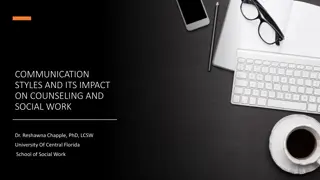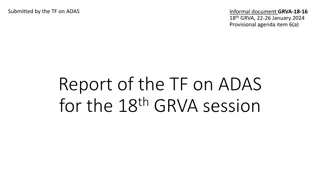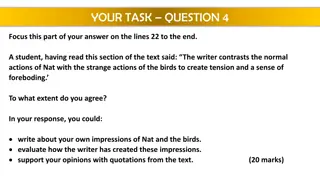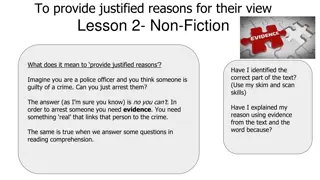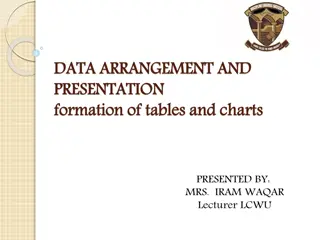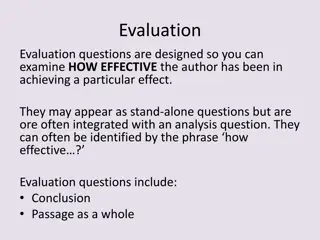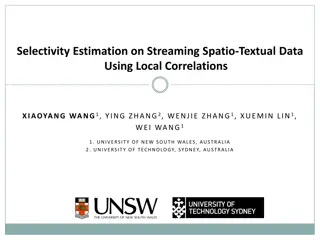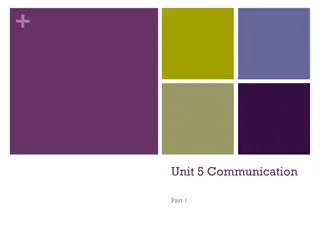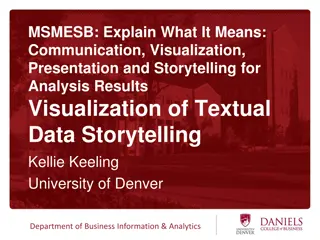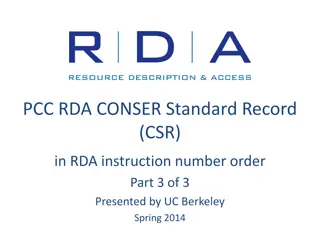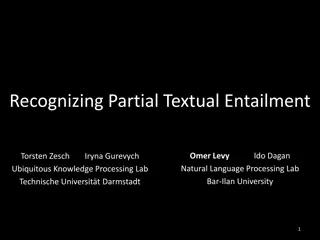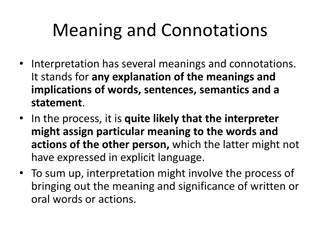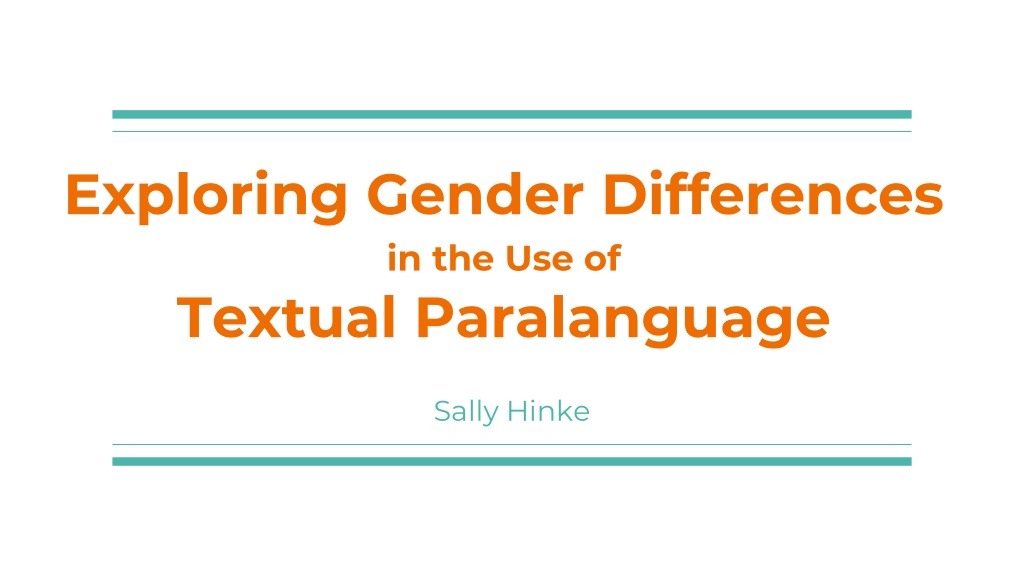
Exploring Gender Differences in Textual Paralanguage Use
This research delves into gender disparities in the utilization of textual paralanguage, highlighting the nuances in communication styles between men and women in written digital interactions. The study aims to investigate the impact of gender on non-verbal components expressed through text and its implications for gender-specific communication patterns.
Download Presentation

Please find below an Image/Link to download the presentation.
The content on the website is provided AS IS for your information and personal use only. It may not be sold, licensed, or shared on other websites without obtaining consent from the author. Download presentation by click this link. If you encounter any issues during the download, it is possible that the publisher has removed the file from their server.
E N D
Presentation Transcript
Exploring Gender Differences in the Use of Textual Paralanguage Sally Hinke
Outline Introduction Definitions, background, study rationale & research questions 1 Method Participants, procedure & analysis plan 2 Results Assumptions, MANOVA & DFA results 3 Discussion Implications & limitations 4
Definitions Textual paralanguage: written expression of non-verbal components expressed through words, symbols, and punctuation to replace or supplement written language (Luangrath, Peck, & Barger, 2017). Goes beyond what is explicitly said 4 types of textual paralanguage: Voice Quality Vocalization Tactile Kinesic Visual Kinesic
Background Plenty of existing literature regarding non-verbal communication in face- to-face interactions Men and women differ in their use of non-verbal communication (Hall, 2006) Smiling, nodding, facial expressiveness, touching of others, hand gestures, etc . Textual Paralanguage has only recently appeared in non-verbal communication literature (Luangrath, Peck & Barger, 2017) Since texting has become a key medium for communication, textual paralanguage has been introduced to explore non-verbal communication in a technology-based context
Study Rationale Fills a gap in the research literature very little studies assessing textual paralanguage none concerned with gender differences Replication of established gender differences in a different medium Advance understanding of how gender influences communication style Inform text-based therapy programs: Crisis Text Line Delivering teletherapy amidst COVID-19 Maximize effectiveness & genuineness
Research Questions Are there gender differences in the use of textual paralanguage? Is there a linear combination of the 4 types of textual paralanguage that can significantly discriminate between genders? ??? ???
Participants Age: (M = 19.8, SD = 1.49) Gender: (69.4% female, 30.5% male) Relationship Status: (63.9% Single, 26.7% In a Relationship, 4.2% Married, 4.2% Divorced/Separated, 1.0% Widowed)
Procedure Participants were instructed to have a conversation consisting of 20 text messages to a lab assistant The lab assistant s gender was unknown to the participants and vice versa. Participants were asked to provide their age, gender, and relationship status after they finished the assigned task Once text messages have been collected, they were analyzed for how many times each participant uses the four elements of textual paralanguage.
Analysis Plan Missing values were omitted using casewise deletion An omnibus multivariate ANOVA was conducted to determine if there is a significant difference between males and females in the use of four types of textual paralanguage Followed by a predictive discriminant function analysis to assess the predictive power of various linear combinations of the dependent variables identified
Missing Data 179 observations with complete data out of 192 13 observations with 1 missing value MCAR ?2(36, N = 192) = 39.98, p = .30 Data missing completely at random
Assumptions Normality Homogeneity Linearity
MANOVA Wilk s Lambda: = 0.75, F(4, 174) = 14.81, p < .001 Pillai-Bartlett Trace: V = 0.25, F(4, 174) = 14.81, p < .001 Hotelling-Lawley Trace: T = 0.34, F(4, 174) = 14.81, p < .001 Roy s Largest Root: = 0.25, F(1, 177) = 60.28, p < .001
Predictive Discriminant Function Analysis Chi-Square Test of Independence: 2(1, N = 179) = 38.45, p < .001
Discussion Self Expression Paralanguage is what discriminated between groups, with females using it more than males Consistent with previous research that has found females use more nonverbal communication in-person than males Females may feel they are more able to express themselves when using paralanguage than males
Implications Limitations Develop a synchronous text- based interventions specific to client s gender Females far outnumbered males in our sample MANOVA assumptions were violated, results could be biased Valuable contribution to Natural Language Processing (NLP) and Machine Learning (ML) to flourish the human element in therapeutic AI (chatbot) Text conversation was with research assistant, therefore participant may have been more formal or not texting in typical way they would with friends
Future Directions Allow individuals to communicate with friends to gain more naturalistic observations Manipulate gender they are interacting with; for example, females communicating with another female vs with a male Implement into text therapy scenario; control group receives no textual paralanguage, experimental group receives textual paralanguage to see if one group feels better at the end or responded better



